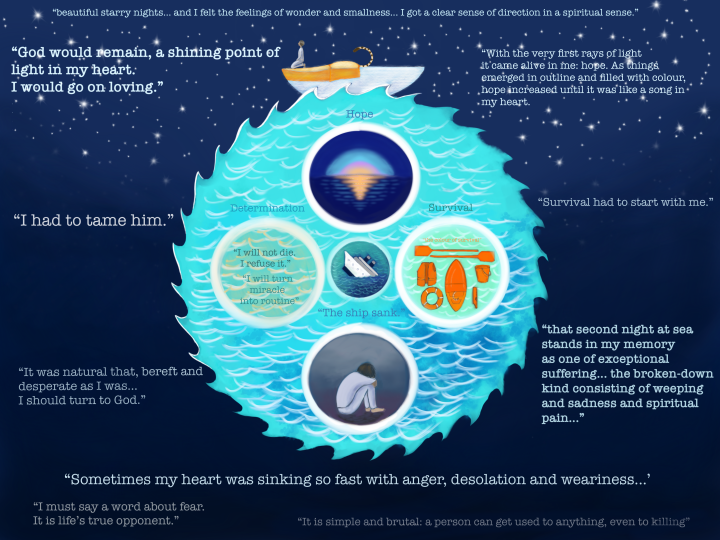Part 2 – The Pacific Ocean
Pi’s family leaves for Canada on the Tsimtsum. But “The ship sank. It made a sound like a monstrous metallic burp.” His sojourn on the Pacific Ocean is one terrific roller coaster ride, punctuated by moments of profound insights and “beautiful starry nights, where with just two colours and the simplest of styles nature draws the grandest of pictures”.
And Pi finds himself on the lifeboat in the company of a three year old Bengal tiger called Richard Parker, a hyena, a wounded zebra and a female orangutan called Orange-Juice. Not exactly the party you would like to have on a lifeboat.
Whether the animals were his true companions or extended metaphors is up to you to decide. Who is Richard Parker? A metaphor representing Pi’s natural and violent instinct to survive or a real tiger? Or is it possible that the different animals represent different aspects of Pi, himself symbolically representing a transcendental number capable of measuring the core of every individual?
The reader is carried along on this journey of hope, despair, determination, survival and faith.
In the images I prepared, I tried to capture the spirit and gist of this section. I am afraid I can not do it justice, which means reading the original text is highly advisable. But, before you read the book, (or maybe you already read it and would like a refresher) you might find the following graphic summary interesting☺️.

Part 3 – Benito Juárez Infirmary, Tomatlán, México
The conclusion
Life of Pi is a tale where fact and fiction, religion and zoology, animal and human behaviour, believers and atheists intertwine. Martel wants us to believe that it is possible for “every element … [to live] in [a] harmonious relation with its neighbour, … all … [can be] kith and kin.” Martel is proposing that unity can be a reality, and he does so with the help of imagination.
This book is a wonderful tale. It delves into the most profound questions of life, death, pain, love, hate, fear, survival… And in asking questions it helps to answer others.
And because I find this quote beautiful beyond compare, I just had to include it here…
“Love is hard to believe, ask any lover. Life is hard to believe, ask any scientist. God is hard to believe, ask any believer. What is your problem with hard to believe?
Thank you for taking the time to read this post ☺️.




